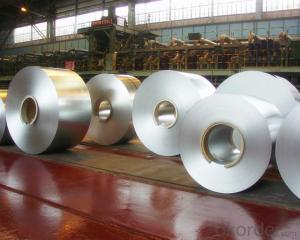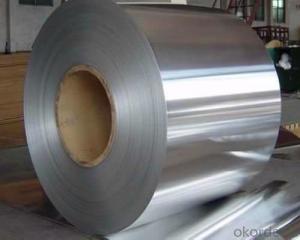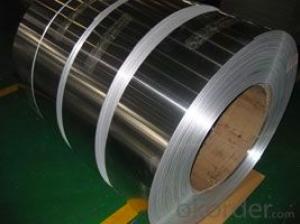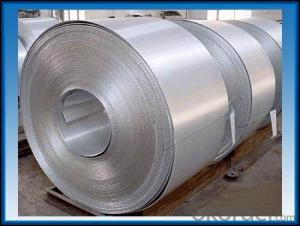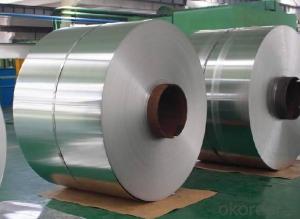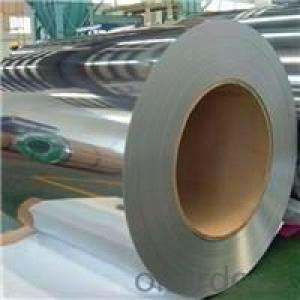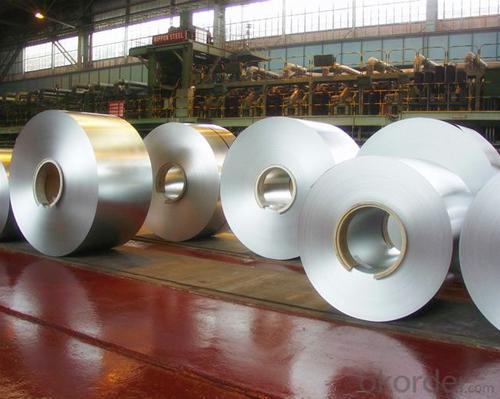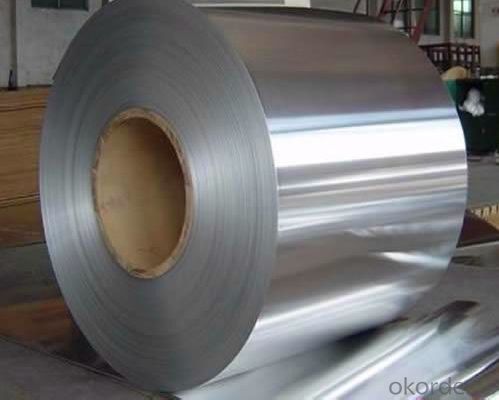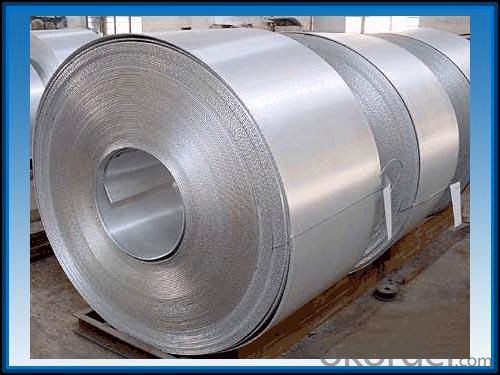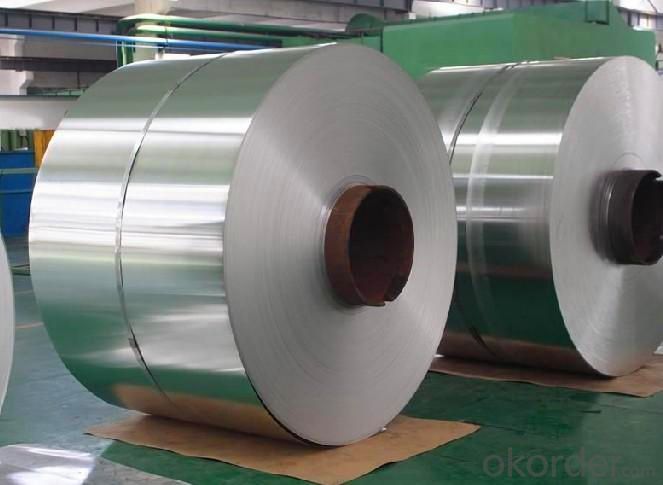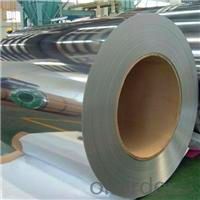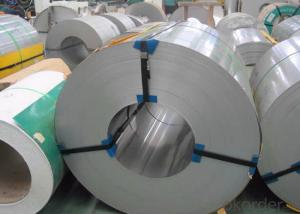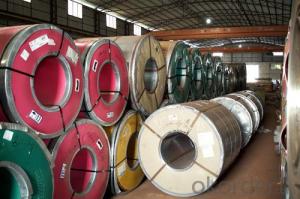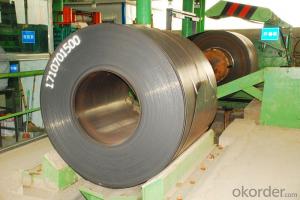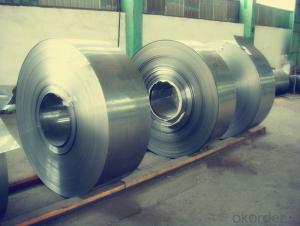Stainless Steel Coil Hot / Cold Rolled Coil 201 Coil
- Loading Port:
- Lianyungang
- Payment Terms:
- TT OR LC
- Min Order Qty:
- 400 m.t.
- Supply Capability:
- 5000 m.t./month
OKorder Service Pledge
OKorder Financial Service
You Might Also Like
201 Hot Rolled Stainless Steel Coil Specifications
THK:2.3/2.5/3.0/4.0mm
Width:485/510/550/610/1010/1240mm
Face:No.1
201 Hot rolled stainless steel Coil Application
Stainless steel is a production which not easy rust,acid resistance and corrosion resistance,so it is widely
used in light industry,heavy industry,daily necessities and the decoration industry.
201 hot rolled stainless steel coil, use to produce cold rolled stainless steel coil and stainless steel tube, pipe.
201 Hot Stainless Steel Coil Chemical Composition(WT%)
(C):≤0.15, (Si):≤0.75, (Mn):5.5~7.50, (Cr):16.0~18.0, (N):≤0.25, (Ni):3.50~5.50, (P):≤0.060, (S):≤0.030
201 Hot Rolled Stainless Steel Coil
Strength Of Extension:100,000 To 180,000 Psi;
Yield Strength:50,000 To 150,000 Psi
Elongation :55 To 60%;
Modulus Of Elasticity:29,000,000 Psi;
Density :.280lbs/Cubic Inch(7.93g/Cm3)
- Q: Are stainless steel strips suitable for HVAC systems?
- Yes, stainless steel strips are suitable for HVAC systems. Stainless steel is a corrosion-resistant material that can withstand the harsh environments and high temperatures commonly found in HVAC systems. It is durable, long-lasting, and provides excellent heat transfer properties. Stainless steel strips are often used for making ductwork, heat exchangers, and other components in HVAC systems due to their strength, resistance to corrosion, and ability to maintain cleanliness and hygiene. Additionally, stainless steel strips are easy to clean and maintain, making them a popular choice for HVAC applications.
- Q: Are stainless steel strips resistant to abrasion?
- Stainless steel strips, in general, exhibit resistance to abrasion. The durability and strength associated with stainless steel render it highly impervious to friction-induced wear and tear. The incorporation of chromium in stainless steel grants it a safeguarding layer, mitigating scratches and abrasion. Nevertheless, the extent of resistance can fluctuate contingent upon the precise grade and finish of the stainless steel strip. Furthermore, variables like the nature and intensity of the abrasive substance, along with the duration of exposure, might also impact the resistance to abrasion.
- Q: What are the different grades available in 111 stainless steel strips?
- There are different grades available in 111 stainless steel strips, including grade 301, grade 304, and grade 316.
- Q: What are the different types of stainless steel strips?
- There are several different types of stainless steel strips, including austenitic, ferritic, martensitic, and duplex stainless steel strips.
- Q: Are stainless steel strips resistant to humidity?
- Stainless steel strips demonstrate resistance to humidity. This is due to the exceptional corrosion resistance of stainless steel, which encompasses its ability to withstand humidity and moisture. The inclusion of chromium in stainless steel generates a protective layer on the surface, preventing oxidation and corrosion. As a result, stainless steel strips exhibit high resistance against the impacts of humidity, rendering them a suitable option for a range of applications in humid settings, including kitchen appliances, outdoor structures, and industrial equipment. However, it should be noted that extended exposure to exceedingly high humidity or corrosive environments may still lead to some degree of corrosion, although it would be significantly less when compared to other materials.
- Q: How are stainless steel strips different from stainless steel sheets or plates?
- Stainless steel strips are thinner and narrower compared to stainless steel sheets or plates. They are commonly used for applications where strength and corrosion resistance are required, such as in automotive, aerospace, and construction industries. Stainless steel sheets or plates, on the other hand, are thicker and wider, and are often used for larger structural or decorative purposes, such as in architecture, kitchen equipment, or industrial machinery.
- Q: How do stainless steel strips handle exposure to chemicals?
- Due to its inherent properties, stainless steel strips exhibit high resistance to chemical exposure. This resistance stems from the composition of stainless steel, which includes a minimum of 10.5% chromium. When stainless steel comes into contact with oxygen, the chromium forms a self-repairing oxide layer on the surface. This oxide layer acts as a protective barrier, preserving the steel's integrity by preventing chemical reactions. In addition to chromium, stainless steel also contains other elements like nickel and molybdenum, which further enhance its resistance to chemical attack. As a result, stainless steel strips find extensive use in industries that involve contact with various chemicals, such as pharmaceuticals, food processing, and chemical manufacturing. These strips can withstand exposure to acids, alkalis, solvents, and other corrosive substances, thus maintaining their strength and durability over time. However, it is important to note that the exact resistance of stainless steel to specific chemicals may vary. Therefore, it is advisable to consult the manufacturer or refer to corrosion resistance charts for more detailed information on the compatibility of stainless steel with specific chemicals.
- Q: Can stainless steel strips be used in pulp and paper industries?
- The pulp and paper industries find stainless steel strips quite useful. Thanks to its remarkable corrosion resistance, stainless steel is an ideal material for industries that frequently encounter moisture or chemicals, like the pulp and paper industry. Multiple purposes can be served by stainless steel strips in this sector, including the production of paper machines and equipment, pulp screens, refining and washing systems, bleaching equipment, and paper handling systems. The durability and resistance to rust and corrosion of stainless steel allow the strips to endure the rigorous conditions and chemicals associated with pulp and paper processes, resulting in extended equipment lifespan and reduced maintenance expenses. Moreover, stainless steel is easy to clean and maintain, an essential aspect in preserving hygienic conditions necessary in the pulp and paper industry. Consequently, the excellent properties and suitability of stainless steel strips make them widely utilized in the pulp and paper industry.
- Q: Can stainless steel strips be used in petrochemical applications?
- Indeed, petrochemical applications do allow for the use of stainless steel strips. Renowned for its remarkable resistance to corrosion, stainless steel proves to be an appropriate material for environments subject to extensive chemical exposure, including petrochemical plants. By withstanding the deleterious effects of petrochemicals, stainless steel guarantees the equipment's durability and longevity. Moreover, its exceptional strength and heat resistance properties amplify its suitability for petrochemical applications. Hence, stainless steel strips find frequent employment in the fabrication of diverse petrochemical equipment, encompassing tanks, pipelines, heat exchangers, and reactors.
- Q: What type of stainless steel is magnetic stainless steel?
- Model with magnetic stainless steel: martensite or ferrite: such as 430, 420, 410 and so on, is magnetic.
Send your message to us
Stainless Steel Coil Hot / Cold Rolled Coil 201 Coil
- Loading Port:
- Lianyungang
- Payment Terms:
- TT OR LC
- Min Order Qty:
- 400 m.t.
- Supply Capability:
- 5000 m.t./month
OKorder Service Pledge
OKorder Financial Service
Similar products
Hot products
Hot Searches
Related keywords
